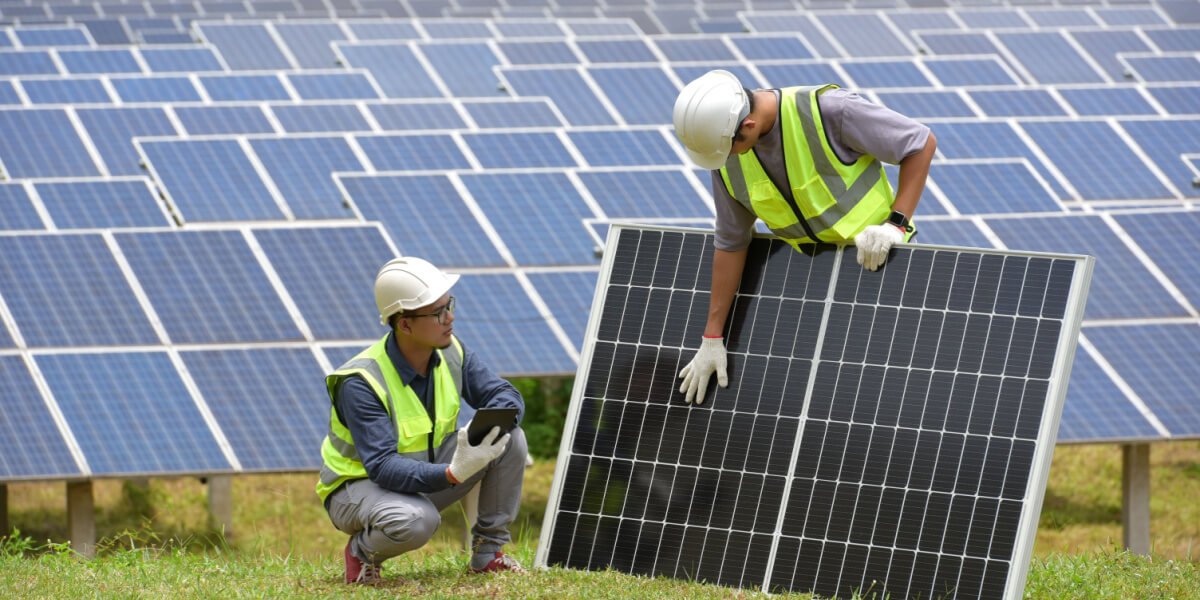KEY POINTS
- Solar panel manufacturers are grouped into Tier 1, Tier 2 and Tier 3 rankings.
- Tier 1 retailers are of the highest quality, while Tier 3 are the lowest.
- While Tier 1 solar panel manufacturers are the most reputable, they may still produce a range of panels of varying quality.
Deciding to go solar isn’t easy. One major consideration is which solar panel manufacturer to go with — given the price of solar, you’ll want to buy from a reputable manufacturer. However, differentiating between high-quality and low-quality solar panel providers can be an impossible task for anyone who’s not a solar expert.
That’s where the solar tier system comes in. Manufacturers are classified as Tier 1, Tier 2 and Tier 3 to help homeowners recognise the longevity and financial stability of the companies actually making the panels used in their solar system. This article explains what these classifications mean and how they can help you make wiser solar choices.
On this page:
Advertisement
What’s a tier solar panel system?
A tier scheme is a solar manufacturer ranking system designed to help Australian solar customers choose which solar panel best suits their needs. It helps buyers differentiate between reliable manufacturers and those that are emerging or worth being cautious of. Tier 1 is considered the highest ranking, and Tier 3 is considered the lowest.
While the tier system can be an indicator of quality, and is sometimes used by providers to promote specific panels, it’s important to keep in mind that this system ranks manufacturers’ bankability, not the panels themselves that they manufacture. Bankability, put simply, means that the manufacturer can get bank loans secured on collateral such as property or shares – it’s a measure of the manufacturer’s financial status, not the panels it makes. Manufacturers may offer panels of varying quality and even Tier 1 retailers sometimes sell inferior products.
There are actually several tier systems but research providers PIKE Research and BloombergNEF are most often referenced in Australia. BloombergNEF (New Energy Finance) focuses on bankability. The company published a statement relating to its ranking system:
“We strongly recommend that [solar] module purchasers … do not use this list as a measure of quality, but instead consult a technical due diligence firm,” it said. “These would usually consider what factory the module comes from, as well as the brand, and give an informed opinion on whether the modules will perform as expected.”
Another consideration is methodology. Tier rankings are weighted in favour of manufacturing volume, so Tier 1 manufacturers are usually the largest in the world. This system also considers whether a manufacturer has staff in Australia to assist with warranty claims.
Tier ranking considerations include:
- Bankability
- Experience
- Financial backings
- Geographic coverage
- Innovation
- Market position
- Panel quality
- Performance
- Sustainability
Tier 1 solar panels
Tier 1 solar panels are produced by carefully vetted, credible Tier 1 manufacturers. The methodology to be ranked as Tier 1 varies between solar research groups but some core principles remain the same. Here are some features shared by Tier 1 manufacturers.
- Experience: Tier 1 manufacturers have at least five years’ experience.
- Reputation: Manufacturers must be known for producing high-quality products and services.
- Scale: Most Tier 1 solar module manufacturers are large, publicly listed companies.
- No outsourcing: Manufacturers must assemble their panels using only their own products. This includes everything from PV cells to metal frames.
- Innovation: Manufacturers must regularly improve their products and processes through research and development.
- Automation: Tier 1 manufacturers must consistently produce high-quality products through automated factory processes.
Tier 2 solar panels
Tier 2 solar panels are sourced from Tier 2 manufacturers, which share some of the following features:
- Less experience: Tier 2 manufacturers have operated for two to five years.
- Emerging reputation: Manufacturers must develop a reputation for high-quality products.
- Smaller scale: Tier 2 manufacturers have comparatively mid-to-small operations.
- Reduced innovation: Manufacturers invest less money in research and development.
- Less automation: Manufacturers may only partially use robotic processes.
While many Tier 2 manufacturers may be close to a Tier 1 level, they’re yet to meet the experience and scale criteria.
Tier 3 solar panels
Tier 3 solar panel manufacturers typically have the following traits in common:
- Least experience: Tier 3 manufacturers have operated for less than a year.
- Outsourced parts: Manufacturers outsource solar panel components.
- Small scale: Tier 3 manufacturers have small operations.
- Minimal automation: Manufacturers rely heavily on manual labour.
Keep in mind that Tier 3 manufacturers are generally new to the market, meaning they might not yet qualify for higher tiers even if they produce quality solar products.
Tier 1 vs Tier 2 vs Tier 3 solar panels
Here’s a snapshot of the differences between Tier 1, Tier 2 and Tier 3 solar panel manufacturers. This table simplifies the solar tier methodology outlined by BloombergNEF.
| Tier 1 Solar Manufacturers | Tier 2 Solar Manufacturers | Tier 3 Solar Manufacturers |
|---|---|---|
| High-quality products | Average quality products | Lowest quality products |
| Fully automated processes | Partially automated processes | Manual processes |
| No outsourcing | Partial outsourcing | Outsourced parts |
| Most experience (5+ years) | Some experience (2–5 years) | Little experience (<1 year) |
| Typically highest prices | Typically mid-range prices | Typically lowest prices |
How to choose the right solar panel manufacturer
While following the tier system seems easy enough, there’s one unfortunate hiccup — access. Tier rankings aren’t usually free to the public so verifying whether your installer is using panels from a high-tier manufacturer can be difficult.
The good news is your installer may have a copy of the tier report they’re referencing, which you can ask to see. If they don’t, you can dig deeper with questions about the manufacturer’s service team, experience and reputation.
To ensure you’re getting the best possible service and installation, choose a trusted solar installer. Visit our Solar Installer ratings page to see how businesses rank on a variety of key factors.




Share this article